 April
28
April
28
Tags
Yves Klein’s Art: Into the Void
 On the 28th of April 1928, the early postmodernist Yves Klein was born in Nice, France, to an Impressionist painter father and an Art Informel artist mother. From a young age, Klein was fascinated with space. Allegedly, at the age of nineteen, him and his friends lay on a beach in the south of France, and each boy picked an element of the world to call his own: Arman chose the earth, Claude chose words, while Yves chose the ether surrounding the planet, which he then signed with a possessive gesture: “With this famous symbolic gesture of signing the sky, Klein had foreseen, as in a reverie, the thrust of his art from that time onwards—a quest to reach the far side of the infinite.” (Hannah Weitemeier, Yves Klein, 1928–1962).
On the 28th of April 1928, the early postmodernist Yves Klein was born in Nice, France, to an Impressionist painter father and an Art Informel artist mother. From a young age, Klein was fascinated with space. Allegedly, at the age of nineteen, him and his friends lay on a beach in the south of France, and each boy picked an element of the world to call his own: Arman chose the earth, Claude chose words, while Yves chose the ether surrounding the planet, which he then signed with a possessive gesture: “With this famous symbolic gesture of signing the sky, Klein had foreseen, as in a reverie, the thrust of his art from that time onwards—a quest to reach the far side of the infinite.” (Hannah Weitemeier, Yves Klein, 1928–1962).
A black-belt yodan master in Judo, Klein was deeply influenced by Eastern spirituality; his work revolved around a Zen-influenced concept he came to describe as ‘le Vide’ (the Void), a nirvana-like state untouched by worldly influences; a neutral zone in which we are encouraged to tune in to our own sensibilities, to face ‘reality’, as opposed to a conventional contemplation of ‘representation’ in art. Having experimented with traditional pictorial forms of expression, he kept reducing these to the bare minimum; from monochrome paintings, he arrived at his famous use of one colour, his patented IKB (International Klein Blue), in many ways, a metaphor for his favourite element, the ether. His use of blue took over almost a decade of his life.
Yet Klein soon realised that he wanted to release colour from its material function as pigment and reemploy it in his work as an atmospheric tool, a creator of space: “ I have pondered whether even colour, in its physical aspect, has become finally for me also a limit and a hindrance to my effort to create perceptible pictorial states. In order to reach Delacroix’s “indefinissable”, the very essence of painting, I have embarked on the “specialization” of space, which is my ultimate way of treating colour. It is no longer a matter of seeing colour but of perceiving it. My recent work with colour has led me progressively and unwillingly to search for the realization of matter with some assistance (of the observer, of the translator), and I have decided to end the battle. My paintings are now invisible and these I would like to show in my next Parisian exhibit at Iris Clert’s.” (Klein, “My Position in the Battle between Line and Color”).
 Whereas up to this point, the artist had been presenting his art in recognisable forms (paintings, books, musical composition), he now took all content out of them. In this way, he tried to create “Zones of Immaterial Pictorial Sensibility” for his viewers. The subject of his art became the image of its absence, instead of using any reference, metaphor or suggestion. He wanted his audience to emerge themselves, in a phenomenological sense, in the experience he created for them, to ‘feel’, as well as intuitively ‘understand’ it. The difficulties in perceiving these radical ‘invisible works’ provided a bewildering challenge for his viewers, or rather, ‘visitors’ of his spaces. His controversial, immaterial exhibition at the Iris Clert gallery on 3 rue des Beaux-Arts in Paris, called Le Vide, opened on the 28th of April 1958, Klein’s 30th birthday. “A Specialization of Sensibility in the Raw Material State of Stabilized Pictorial Sensibility, popularly referred to as Le vide (The Void), the exhibition was divided into two parts. Upon arrival, visitors encountered the gallery windows painted in Klein’s signature International Klein Blue, blocking any view into the interior or to the street outside. The gallery’s street entrance was closed, and visitors entered the space through the neighboring alleyway, passing under long blue drapes that framed the entrance where two private guards checked invitations and two Republican Guards dressed in full regalia were stationed. In the darkened passage, which also served as a reception area, visitors were offered cocktails of Cointreau, gin, methylene blue. By passing through a second curtain at the back of the passageway where two more guards restricted admittance to ten at a time, the visitors entered the gallery that Klein had repainted white. The empty interior – Klein’s space of pictorial sensibility – was to be perceived as the immaterialization of the blue exterior.” (Kaira M. Cabañas, ‘Yves Klein’s Performative Realism’, Grey Room, No. 31, Spring, 2008).
Whereas up to this point, the artist had been presenting his art in recognisable forms (paintings, books, musical composition), he now took all content out of them. In this way, he tried to create “Zones of Immaterial Pictorial Sensibility” for his viewers. The subject of his art became the image of its absence, instead of using any reference, metaphor or suggestion. He wanted his audience to emerge themselves, in a phenomenological sense, in the experience he created for them, to ‘feel’, as well as intuitively ‘understand’ it. The difficulties in perceiving these radical ‘invisible works’ provided a bewildering challenge for his viewers, or rather, ‘visitors’ of his spaces. His controversial, immaterial exhibition at the Iris Clert gallery on 3 rue des Beaux-Arts in Paris, called Le Vide, opened on the 28th of April 1958, Klein’s 30th birthday. “A Specialization of Sensibility in the Raw Material State of Stabilized Pictorial Sensibility, popularly referred to as Le vide (The Void), the exhibition was divided into two parts. Upon arrival, visitors encountered the gallery windows painted in Klein’s signature International Klein Blue, blocking any view into the interior or to the street outside. The gallery’s street entrance was closed, and visitors entered the space through the neighboring alleyway, passing under long blue drapes that framed the entrance where two private guards checked invitations and two Republican Guards dressed in full regalia were stationed. In the darkened passage, which also served as a reception area, visitors were offered cocktails of Cointreau, gin, methylene blue. By passing through a second curtain at the back of the passageway where two more guards restricted admittance to ten at a time, the visitors entered the gallery that Klein had repainted white. The empty interior – Klein’s space of pictorial sensibility – was to be perceived as the immaterialization of the blue exterior.” (Kaira M. Cabañas, ‘Yves Klein’s Performative Realism’, Grey Room, No. 31, Spring, 2008).
Klein said he did not paint the walls as he did not want to attract attention to their existence, but the ambience of the space he created in its entirety. He wanted his space to be simply an “abstract container of social relations.” People without invitations had paid 1500 to gain entry and see… nothing. “Only the gallery context guaranteed that there was any “painting” or aesthetic “ambiance” to be experienced. These absences are crucial and drive one to the crux of Klein’s performative realism: the discursive practices that regulate painting and the state continue to function and produce effects even in the absence of their material reality or “referent”. (Kaira M. Cabañas). The whole formality of the event (elaborate official looking invitations, uniformed guards on the door, a detailed report written by the artist following the opening etc.) gave this event a ritualistic effect and a solemn atmosphere. Klein engineered this especially so his audience perceived the empty gallery space, the void, as a sensually and spiritually potent experience.
 “For Klein, space was never simply a vacuum. It was always filled with spiritual (Klein was a Rosicrucian) and cosmological energy, and the forces of human perception.” (Larry Busbea, review of Yves Klein: Air Architecture, in Journal of the Society of Architectural Historians, Vol. 64, No. 4, Dec., 2005). Klein maintained his membership with the Oceanside Rosicrucian Society from 1948 to 1953 and was influenced by Heindel’s conception of space: “there is no such thing as empty or void space … space is Spirit in its attenuated form; while matter is crystallized space or Spirit.” (Max Heindel, Rosicrucian Cosmo-Conception or Mystic Christianity: An Elementary Treatise upon Man’s Past Evolution, Present Constitution and Future Development, Oceanside, CA: Fellowship Press, 1920). Through his studies on the presence of the absence, Klein was a major influence on future conceptualists and minimalists in their attempts to dematerialize the art (and architectural) object. With Klein, however, there was a departure from the Duchampian focus on the art object, to the experience stimulated by social and institutional conventions.
“For Klein, space was never simply a vacuum. It was always filled with spiritual (Klein was a Rosicrucian) and cosmological energy, and the forces of human perception.” (Larry Busbea, review of Yves Klein: Air Architecture, in Journal of the Society of Architectural Historians, Vol. 64, No. 4, Dec., 2005). Klein maintained his membership with the Oceanside Rosicrucian Society from 1948 to 1953 and was influenced by Heindel’s conception of space: “there is no such thing as empty or void space … space is Spirit in its attenuated form; while matter is crystallized space or Spirit.” (Max Heindel, Rosicrucian Cosmo-Conception or Mystic Christianity: An Elementary Treatise upon Man’s Past Evolution, Present Constitution and Future Development, Oceanside, CA: Fellowship Press, 1920). Through his studies on the presence of the absence, Klein was a major influence on future conceptualists and minimalists in their attempts to dematerialize the art (and architectural) object. With Klein, however, there was a departure from the Duchampian focus on the art object, to the experience stimulated by social and institutional conventions.
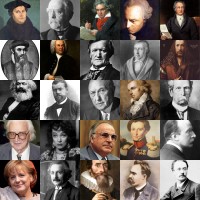


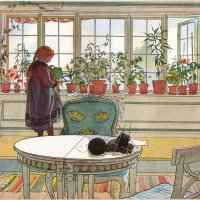
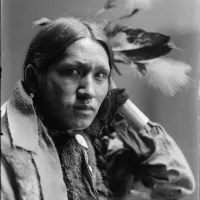
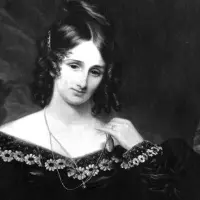
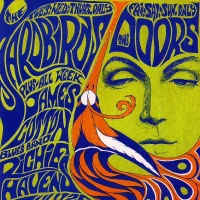
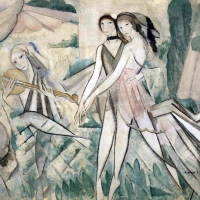
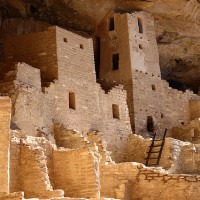
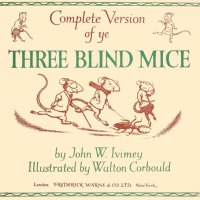
Pingback: Dreaming Angelic Conversations: Imagining Jarman and Klein in Phantom Dialogue. – Delphinium